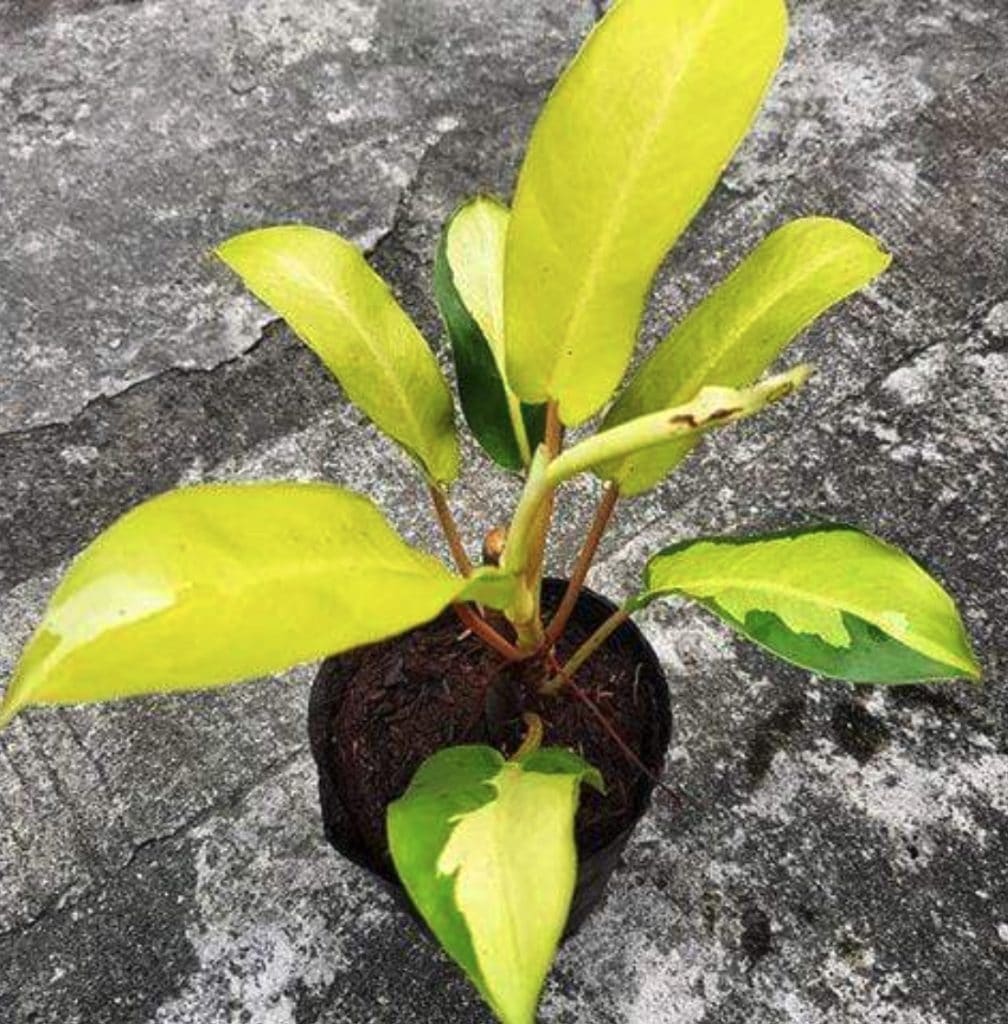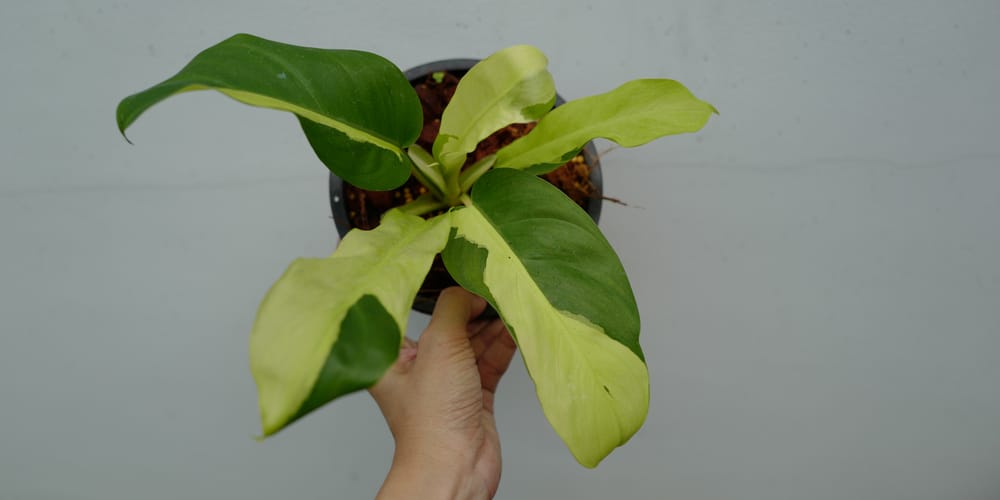The Thai Sunrise Philodendron has been a popular tropical houseplant amongst collectors throughout the world for decades. It’s relatively rare and can be expensive to buy due to its beautiful foliage.
Although this plant comes from a tropical climate and subtropical environments, it can be grown indoors successfully. Let’s look at how to grow and care for a Thai Sunrise Philodendron.
What is a Thai Sunrise Philodendron?
The Thai Sunrise philodendron is a member of the large family of Philodendrons known as the Araceae genus. These plants are commonly kept as house plants but can also be grown outside in warmer climates. If you live in USDA zones 9 to 12, you can grow your Thai sunrise philodendron outdoors year-round. In slightly cooler areas, the Thai sunrise can be moved outdoors onto a patio during the summer months.
Thai Sunrise philodendrons have beautiful lime green and yellow variegated leaves which are elongated. The leaves are relatively large and can grow between 7 and 10 inches long. This plant is fairly compact compared to many philodendron species and will grow to be about 3 feet tall at maturity.
The Thai Sunrise philodendron is toxic to cats and dogs, so keep it out of their reach. Humans can also be affected by this plant if they consume the leaves or stem, so young children shouldn’t have access to the plant. It can also cause skin irritation in some people, so be careful when handling your plant.
Thai Sunrise Philodendron Care Guide

Growing Thai Sunrise Philodendron plants indoors is considered to be relatively simple. These plants do not require much specific care, but they will flourish with some basic attention and maintenance. Here are some tips to help you grow a healthy Thai sunrise philodendron:
Sunlight needs
The Thai Sunrise plant should be grown in an area of the home with ample indirect sunlight exposure for most of the day. Aim to place your plant in bright indirect sunlight for at least six hours daily. Don’t leave your plant in the full sun, or its leaves may burn.
When grown indoors, make sure you have very bright light; an east window is perfect; otherwise, supplemental fluorescent lights overhead will work fine. Avoid poorly lit or sunny locations.
Watering Requirements
The Thai sunrise philodendron can be watered whenever the top inch or two of soil becomes dry to the touch. It is preferable to keep the soil moist at all times, but never allow it to be soggy or drenched in water. Overwatering this plant can cause root rot and other severe problems that will gradually stunt its growth altogether.
Fertilization
Feeding your Thai Sunrise philodendron regularly will improve the overall health of the plant. Fertilizing should take place once every month during the spring and summer seasons. You can use a fertilizer that’s specially designed for tropical plants or a standard houseplant formula at half the recommended strength.
Propagation
Thai Sunrise philodendron plants are propagated by stem cuttings. It’s best to propagate in the early spring and choose a stem that’s at least 4 inches long.
For best results, remove several shoot tips from the mother plant and plant them in soil with high humus content. After a few weeks, these shoots should begin producing roots and will eventually become healthy and stable plants on their own.
Soil
Like all philodendrons, the Thai Sunrise prefers soil that’s loose and well-draining. These plants like soil that’s neutral or slightly acidic with a pH range between 5.0 and 7.0. You can add some peat moss or perlite to the plant’s soil.
Pruning
It doesn’t need much pruning. You can pinch off the dead or damaged leaves.
Pests
Thai sunrise philodendron can be affected by sap-sucking insects such as spider mites and aphids. They are generally fairly pest-resistant plants but can be treated with neem oil or an insecticidal spray if insect infestation occurs.
Humidity
This plant needs high humidity, so put it on a tray filled with pebbles and keep the pot sitting in about an inch of water at all times. Mist your plant at least once a week in addition to waterings to help increase humidity. Aim to create a humidity of around 50%.
Temperature
This tropical plant likes temperatures between 60 and 80 degrees F at night and 70 to 90+ during the day. If you live in the upper-temperature ranges, use a thermometer to ensure your house doesn’t get too hot for these plants.
Thai sunrise philodendrons aren’t very cold tolerant and will only survive short periods of temperatures in the 40’s or lower. If freezing conditions are expected, you should bring your plant inside or cover it with insulation materials.
Conclusion
The Thai Sunrise philodendron is a large plant that’s easy to care for. If you get the basics right, your plant will thrive. Just provide plenty of indirect sunlight exposure and water sparingly, and this plant will reward you with years of lush green foliage. It is, however, quite expensive.
